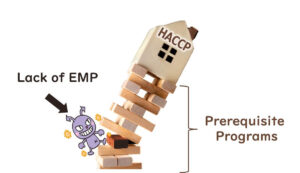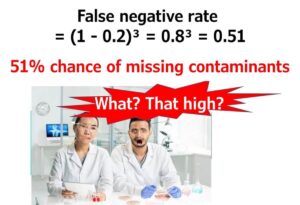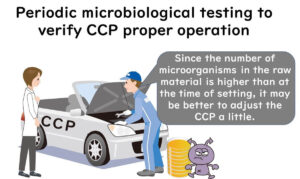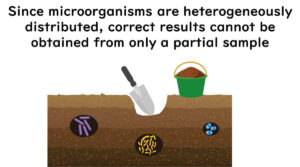Microbial Testing in HACCP
Explore various aspects of microbial testing under the HACCP framework. This category covers key methodologies, regulatory compliance, and practical applications in food safety management.
What is the Purpose of Microbial Testing of Food Products at the Time of Shipment in Food Manufacturing Plants? How Reliable is it?
Ensuring that food products meet the microbial standards set for each type of food is, of course, essential. However, in the case of voluntary testing, the effectiveness of microbial testing of products at the time of shipment varies. Some foods benefit significantly from such tests, while for others, the efficacy is minimal. So, which foods benefit from microbial testing at shipment, and which do not? This article introduces a scientific paper that investigates this issue. The author is Dr. Zwietering, Chair of the International Commission on Microbiological Specifications for Foods (ICMSF) as of May 2022.
Unified Protocol for Environmental Monitoring in Food Manufacturing
There are no specific protocols provided by ISO standards for environmental monitoring in food manufacturing plants. However, having concrete protocols is convenient when conducting monitoring in the field. In 2012, EU experts worked on establishing a unified protocol, particularly for the important bacterium Listeria monocytogenes. This article provides a digest of this protocol, focusing on key points with illustrations for clarity. While the focus is on Listeria, the fundamental methods of microbial sampling in food factories are also covered, making this a valuable read for beginners in food microbiology.
The Importance of Environmental Monitoring in Food Factory Hygiene Management
In the context of food factory hygiene management, the Environmental Monitoring Programme (EMP) plays a critical role as a tool for microbiological testing. Numerous cases of foodborne illness and product recalls have shown that the implementation of HACCP alone is not sufficient to prevent microbiological contamination. This article outlines the fundamental principles of environmental microbiological monitoring in food manufacturing plants.
Easy-to-Understand Food Microbiology Testing Sampling Plans in the ICMSF
The meaning of a "negative" result in food microbiological testing varies depending on the sampling plan used. This article aims to explain the sampling plans of the International Commission on Microbiological Specifications for Foods (ICMSF) in an accessible manner. These sampling plans are adopted in the EU's food safety and process hygiene standards. Understanding the rationale behind these sampling plans is more important than memorising the plans themselves. This article focuses on explaining the "why" for beginners.
Understanding the Accuracy of Microbial Testing of Food
To ensure food safety, it's essential to grasp the purpose of microbial testing and understand its accuracy. How likely are we to correctly detect contaminated food through microbial testing? For example, what is the probability of a false negative result when testing food samples with a 10% contamination rate if we test three samples? Alternatively, how many samples need to be tested to achieve 95% accuracy in detecting contamination in food samples with a 10% contamination rate? This article will guide you through these calculations step-by-step, using Excel for ease of understanding and application.
The Role of Microbial Testing in HACCP
While HACCP aims to reduce reliance on end-product testing, microbial testing still plays a vital role in effective hygiene management. This article explains when microbial testing is still necessary, how it supports HACCP implementation, and why it should not be entirely replaced by monitoring alone—even in highly controlled environments.
How HACCP Reduces Reliance on Microbial Testing Through Process Control
HACCP (Hazard Analysis Critical Control Point) is a system designed to ensure food safety by preventing hazards before they occur, rather than relying solely on final product testing. This approach shifts the focus from microbial testing to process control, where risks are managed proactively at key points in food production.
But how does this system reduce the need for microbial testing? This article explores the fundamental concepts behind HACCP and how it has changed food safety management.






